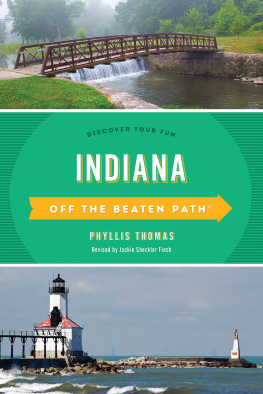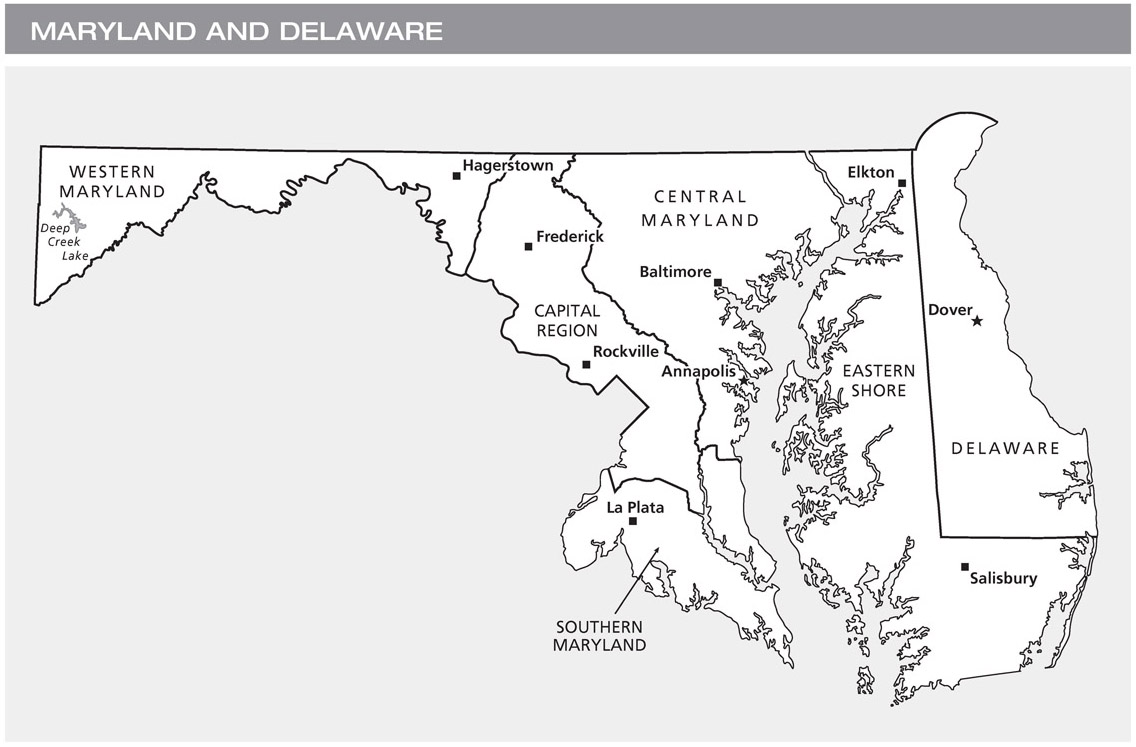Judy Mudrick Colbert is a longtime resident of Maryland. An award-winning freelance writer and photographer, Judys more than 1,000 articles and photographs have appeared in such publications as Chesapeake Bay Magazine, Bay Weekly, Northern Virginia Magazine, Southern Maryland This Is Living, Howard County Times, Chesapeake Life, Grapevine, Spinsheet, Maryland Life, SouthernTravelNews.com, SouthernCruising.com, Fredericksburg Free Lance-Star, Forward, Meetings Media, and dozens of other publications. She has appeared on television and radio programs, including MSNBC, Good Morning America, and Arthur Frommers Almanac of Travel.
Other titles Judy has authored include Virginia Off the Beaten Path and Insiders Guide to Baltimore, published by Globe Pequot Press; Country Towns of Maryland and Delaware; Peaceful Places Washington, DC (co-author); Chesapeake Bay Crabs cookbook; and Fun Places to Go with Children in Washington, D.C.
If you enjoy reading this book and exploring the places listed in it, please leave a review on Amazon and any other book sites you visit. Thank you.
Dedicated to Stan Ruddie, photographer extraordinaire.
Travel guidebook information is difficult to maintain. Businesses open and close. Operating hours and admission fees change. If nothing else, keeping up with Web site URLs could be a full-time job. Being up-to-date and accurate is essential because if you read something that is incorrect, you may wonder about the next entry and the next. Similarly, you may delight in a restaurant or attraction I suggested even though the operation may be wet behind the ears and still working out the kinks when I write about it. If shes right on that, she must be right on the other suggestions, you think. I love telling you that I think this is worth your time and worth your effort, particularly when it does take you off the beaten path. Its why I dont tell you where not to go or that a particular restaurant hasnt passed a health inspection in the last three years. (Ugh!)
With that introduction, and with more appreciation than I can begin to express, thanks go to the people at the county and city DMOs (Destination Marketing Organization), convention and visitor bureaus, and chambers of commerce of Maryland and Delaware. They send information to me, show me around when I visit, andin the figurative sensekeep me on my toes with what I should know. Publicists and business owners, and regular users of these Off the Beaten Path guides who send suggestions and updates, are all invaluable.
Knowing I will omit someone and apologizing ahead of time, extra thanks go to (alphabetically):
Crystal Abrom, Tiffany Ahalt, Jennifer Arrigo, Ted Becker, Rich and Susan Bloch, Jennifer Boes, Krista Boothby, Robert S. Brown, Jana A. Carter, Ashley Chenault, Katie Clendaniel, Tina Coleman, Tara Coursey, Bob Cullen, Hilary Dailey, William Annis Davis, Andrew Der, John Doerfler, Betsy Starrett DeVore, Sarah Duck, Amanda Fenstermaker, Kristen Goller, Leslie W. Graves, Kelly Groff, Liz Griffin, Marjorie Hampson, Amanda Hof, Len Jaffe, Tracey Johnson, Vanessa Junkin, Trish McClean, Melissa Muntz, Mary-Lynne Neil, Kristen Pironis, Gregory Pizzuto, Melanie Pursel, Mike Rauck, Tom Riford, Susan Seifried, Barbara Sopato, Daniel Spedden, Connie Spindler, Yvonne (Bonnie) Staub, Clint Sterling, Cory Talbott, Sandy Turner, Peter van Helden, Cassandra Vanhooser, Cory Van Horn, Jessica Waters, Nikki Wheatley, Ashli Workman, and Dave Ziedelis.
Last, and certainly not least, thanks to Greta Schmitz, an editor with extraordinary talent, wit, and patience. Thank you is so insufficient.
Western Marylands three countiesGarrett, Allegany, and Washingtonare a combination of farmlands, rugged mountains, sedate streams, and white-water rivers.
The products of farms and iron furnaces needed to be transported to customers between Wheeling, West Virginia, and the East Coast. So through this territory came the National Pike, which now is Alternate Rte. 40. It was the first road across the country funded by the federal government. Along the road are many of the original mile markers, white metal (although they look like stone) obelisks standing about 3 feet high.
People travel to this area to escape the heat and humidity of a city summer. Now, they also flock here for the year-round outdoor activities from white-water rafting to downhill and cross-country skiing. Former summer cottages have been modified for year-round living or torn down and replaced with vacation or primary housing. Condos have sprung up like dandelions. (You know, some people like dandelions because of the wine and salad potential. Others hate dandelions because theyre annoying weeds.) Artsy and New Age people have moved here, as certain a harbinger of a real community developing as spotting the first robin of spring.
Garrett County
Vacationers have been seeking respite in Garrett County for hundreds of years, and traces of their history can be found throughout the county. The Shawnee Indians summered here. People from the sunbaked, humid cities of Washington and Baltimore came here to enjoy the cool mountain climate as early as 1851. That is when the Baltimore and Ohio Railroad ran its line to Oakland, which would become the county seat. The train no longer stops in Garrett County, but the Oakland station, an outstanding and picturesque Queen Anne structure built in 1884, remains.
Garrett County is known for, among other things, Deep Creek Lake, the largest lake in the state (all Maryland lakes were made by humans). The dam (1,300 feet long and 62 feet high) creating the 3,900-acre lake was built in 1925 to provide hydroelectric power. In 1999 Maryland bought the lake for $7.8 million to ensure that the area remained available as a recreation site. The lake is great for boating, fishing, swimming, and just about any other water-based activity you can want. The boats and floating docks and piers are removed in early winter and the water level is dropped to allow for winter freezing, snow accumulation, and the spring thaw runoff. The area receives about 120 inches of snow a year, more than Anchorage, Alaska. Adjacent to the 1,800-acre Deep Creek Lake Park, with its mile-long shoreline, two swimming beaches, 112-site campground, and more, is the Deep Creek Lake Natural Resources Management Area. Deep Creek Lake State Park, 898 State Park Rd., Swanton, is open daily from sunrise to sunset. Contact (301) 387-5563 or https://dnr.maryland.gov/publiclands/Pages/western/deepcreek.aspx.
AUTHORS FAVORITES WESTERN MARYLAND
Antietam Battlefield
Garrett County Historical Society Museum
LaVale Toll Gate House
Washington County Museum of Fine Arts
Western Maryland Scenic Railroad
The Nature Conservancys Cranesville Swamp is about as off the beaten path as youre going to find. Its about 10 miles out of Oakland off Cranesville Rd., and covers more than 500 acres in Maryland (plus more in West Virginia). This natural phenomenon is a remnant of a boreal forest that produces growth normally found in arctic regions. So, you geologists, biologists, and nature lovers can see many rare species of flora and fauna, at least rare for this area. You may see the tamarack or larch and the tiny, round-leaved sundew, an insectivorous plant. Among the 100 plus bird species found here are the northern water shrew, the alder flycatcher, Blackburnian warbler, the golden-crowned kinglet, and the saw-whet owl.






